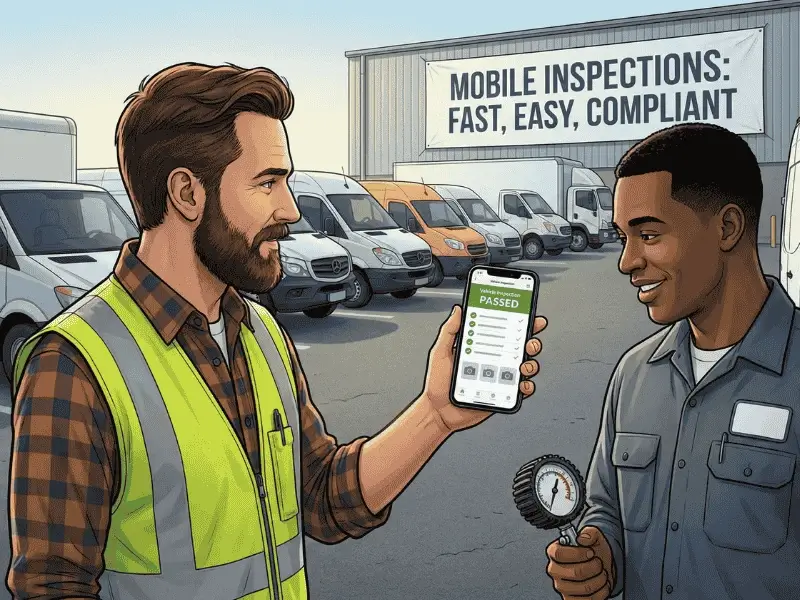Key Takeaways
A fleet software upgrade involves replacing your existing fleet management system with a newer, more advanced version that incorporates the latest features, functionalities, and technological advancements. This process typically includes installing the latest release from the software vendor, which may include improvements such as real-time tracking capabilities, route planning algorithms, reporting and analytics tools, better integration with other business systems, and more.
Organizations can improve operations and decision-making, reduce costs, and gain a competitive edge in an increasingly digital and data-driven industry by upgrading to a modern fleet software solution. In this article, we'll explore five key signs that indicate it's time to consider a software upgrade for your fleet.
But, Why Do Your Fleets Need an Upgrade?
The primary purpose of upgrading fleet management software is to use the latest technology and remain competitive. Outdated software leads to inefficiencies, lack of real-time data visibility, limited integration capabilities, scalability issues, and potential security risks.
An upgrade provides streamlined workflows through automation, reporting and analytics tools, proper integration with other business systems, the ability to scale with business growth, and access to ongoing vendor support and feature enhancements.
By implementing a modern fleet software solution, organizations can optimize operations, reduce costs, improve decision-making, increase productivity, and ultimately enhance customer satisfaction. Investing in an upgraded system future-proofs fleet management, enabling companies to capitalize on emerging technologies and adapt to evolving business needs.
Signs Your Fleet Needs a Software Upgrade
Here are five key indicators that it might be time to consider a software upgrade.
1. Inefficient Processes and Manual Data Entry
One of the most significant signs that your fleet needs a software upgrade is when you're still relying heavily on inefficient processes and manual data entry. If your fleet managers and drivers are spending excessive time manually inputting data, creating reports, and tracking information across multiple systems, it's a clear indication that your software is not meeting your needs.
Manually entering data is not only time-consuming but also prone to human error, which can lead to inaccurate information and costly mistakes. Modern fleet management software should automate these processes, minimizing the need for manual data entry and streamlining workflows. By upgrading to a more efficient system, you can reduce the time spent on administrative tasks, freeing up your team to focus on more strategic initiatives.
2. Lack of Real-Time Visibility and Reporting
Effective fleet management relies on having real-time visibility into your operations, including vehicle locations, driver behavior, fuel consumption, and maintenance needs. If your current software lacks the capability to provide real-time data and comprehensive reporting, it's likely hindering your ability to make informed decisions and respond promptly to issues or opportunities.
Up-to-date fleet management software should offer robust reporting and analytics tools, allowing you to monitor key performance indicators (KPIs) and generate customized reports on demand. With real-time visibility, you can quickly identify areas for improvement, optimize routes, and address potential problems before they escalate.
3. Limited Integration Capabilities
In today's connected world, seamless integration between different systems and platforms is essential for efficient operations. If your fleet management software lacks integration capabilities or requires manual data transfer between systems, it's a clear sign that an upgrade is needed.
Modern fleet management software should integrate seamlessly with other business systems, such as accounting, customer relationship management (CRM), and enterprise resource planning (ERP) solutions. This integration allows for data to flow freely between systems, eliminating the need for manual data entry and ensuring that information is consistent and up-to-date across all platforms.
4. Scalability Issues
As your business grows, your fleet management software should be able to scale accordingly. If you're experiencing performance issues, slow response times, or limitations in handling larger data volumes, it's a sign that your current software is not equipped to handle the increasing demands of your expanding fleet.
An upgraded fleet management solution should be scalable, able to accommodate your growing needs without compromising performance or functionality. Look for software that can handle larger fleets, more complex routing requirements, and increased data volumes without slowing down or becoming cumbersome to use.
5. Limited Support and Outdated Technology
Technology evolves rapidly, and software that was cutting-edge a few years ago may now be outdated and lacking in critical features or support. If your current fleet management software is no longer receiving updates or adequate support from the vendor, it's a clear indication that it's time for an upgrade.
Outdated software can pose security risks, compatibility issues, and may not be optimized for the latest hardware and operating systems. Additionally, a lack of vendor support can leave you vulnerable to potential issues or problems, without the necessary resources to resolve them efficiently.
By upgrading to a modern fleet management solution with a SaaS outlook, you'll benefit from the latest technology, enhanced security features, and ongoing support and updates from the vendor. This ensures that your software remains up-to-date, secure, and able to take advantage of the latest advancements in fleet management technology.
Closing Thoughts
Recognizing the signs that your fleet needs a software upgrade is important for maintaining operational efficiency, reducing costs, and staying competitive in today's dynamic business environment. By addressing inefficient processes, lack of real-time visibility, limited integration capabilities, scalability issues, and outdated technology, you can position your fleet for success.
Upgrading to a modern fleet management solution can provide a wealth of benefits, including streamlined workflows, improved decision-making, enhanced collaboration, increased productivity, and better overall fleet performance. It's an investment that can pay dividends in the form of reduced operational costs, improved customer satisfaction, and a competitive edge in your industry.
Don't wait until your current software becomes a bottleneck to your operations. Proactively evaluate your fleet management software and be on the lookout for these five signs that it's time for an upgrade. By staying ahead of the curve and embracing the latest technology, you'll ensure that your fleet remains efficient, agile, and poised for growth in an ever-evolving business landscape.



.png)








.png)


.png)





.webp)



